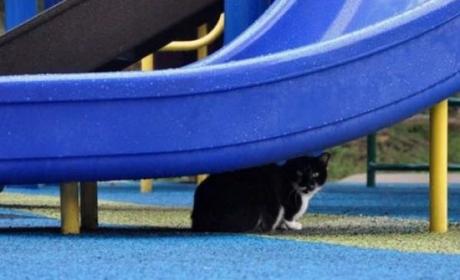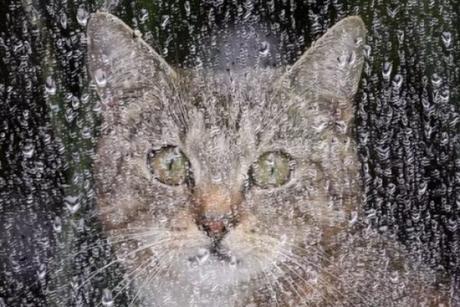Waterproofing your home is an essential part of home maintenance that can save you from the costly damage caused by water ingress. From preventing mold growth to maintaining structural integrity, a well-waterproofed home ensures a safe and comfortable living environment. We will guide you through some critical steps to effectively waterproof your home, whether you’re building anew or upgrading an existing property, and we get to enjoy some pictures of cats hiding from the rain to enjoy along the way.

Step 1: Inspect Your Home’s Exterior
Before diving into the waterproofing process, it’s crucial to conduct a thorough inspection of your home’s exterior. This step is vital as it helps identify potential entry points for water. Key areas to inspect include the roof, gutters, downpipes, windows, doors, and the foundation. Look for cracks, gaps, deteriorated materials, or any other signs of wear and tear. Spotting these issues early allows you to address them before they escalate into more significant problems.

Step 2: Repair Cracks in the Foundation
The integrity of your home’s foundation is paramount when it comes to waterproofing. Cracks in the foundation can lead to serious water infiltration issues, which, if left unattended, may compromise the stability of your home. Minor cracks can often be repaired using waterproof sealants, which are readily available at most hardware shops. However, if the cracks are large or numerous, it may be wise to consult a professional to assess and repair the damage.

Step 3: Clean and Maintain Gutters and Downpipes
Gutters and downpipes play a critical role in directing water away from your home’s foundation. Blocked or damaged gutters can cause water to overflow and pool around the foundation, leading to potential water ingress. Regular cleaning of gutters—at least twice a year—ensures they remain free from leaves, debris, and other blockages. Additionally, ensure that downpipes extend far enough from the foundation to carry water away effectively. Installing downpipe extensions can be a simple and effective solution.

Step 4: Install a Sump Pump in the Basement
Basements are particularly vulnerable to water ingress, especially during heavy rains. A sump pump is an excellent investment that helps remove excess water from your basement, preventing flooding and water damage. When choosing a sump pump, consider the size and capacity that best suits your basement. Regular maintenance, including testing the pump periodically, ensures it functions correctly during emergencies.

Step 5: Waterproof Basement Walls and Floors
Given their location below ground level, basements are prone to moisture issues. Waterproofing the walls and floors is a critical step in protecting this area of your home. There are various waterproofing products available, such as waterproof paint, sealants, and membranes. Applying these products to your basement walls and floors can help create a barrier that prevents water from seeping in. Follow the manufacturer’s instructions carefully to ensure the best results.

Step 6: Install French Drains
A French drain is a highly effective system designed to divert water away from your home’s foundation. It consists of a trench filled with gravel and a perforated pipe that channels water away from the foundation. Installing a French drain can be a DIY project if you’re comfortable with manual labour, but professional installation ensures it’s done correctly. The benefits of a French drain include preventing water from pooling around the foundation, which reduces the risk of water ingress.

Step 7: Seal Windows and Doors
Windows and doors are common entry points for water, particularly during storms. Proper sealing around these areas is essential to prevent water from seeping into your home. Weatherstripping and caulking are two effective methods for sealing gaps around windows and doors. Weatherstripping involves applying a strip of material to the edges of windows and doors to create a tight seal, while caulking involves applying a waterproof sealant to gaps and cracks. Additionally, consider installing storm windows or doors for added protection.

Step 8: Grade the Landscape Away from the Foundation
The grading or slope of the land around your home plays a crucial role in directing water away from the foundation. If the ground slopes towards your home, water is more likely to pool around the foundation, increasing the risk of water ingress. You can assess the grading around your home using a simple level tool. If necessary, regrading the landscape by adding soil to create a gentle slope away from the foundation can help prevent water accumulation. It’s also important to use soil types that promote good drainage, such as sandy or loamy soil.

Step 9: Apply Waterproof Coatings to Exterior Walls
Exterior waterproof coatings provide an additional layer of protection against water ingress. These coatings are applied to the exterior walls of your home and are designed to repel water, preventing it from penetrating the surface. There are various types of waterproof coatings available, including elastomeric paint and liquid rubber. These products can be applied using a brush, roller, or sprayer, depending on the manufacturer’s recommendations. For maximum protection, ensure that the coating is applied evenly and thoroughly.

Step 10: Maintain and Monitor
Waterproofing your home is not a one-time task; it requires ongoing maintenance and monitoring. Regular inspections, particularly after heavy rains or storms, are essential to ensure that your home remains waterproof. Pay attention to any signs of water ingress, such as damp spots, mould, or peeling paint. Seasonal checks of key areas, such as the roof, gutters, and basement, help identify potential issues early. Additionally, consider using moisture meters or water alarms for early detection of water problems, providing peace of mind that your home is protected.
Waterproofing your home is an essential process that protects against the damaging effects of water ingress. By following these ten steps, you can ensure that your home remains dry and secure, safeguarding it from potential damage. Start with a thorough inspection, address any issues promptly, and maintain your waterproofing efforts over time. If you’re unsure about any aspect of the process, don’t hesitate to seek professional advice. With proper waterproofing, you can protect your home, your belongings, and your peace of mind.

